Plasma systems can be used to change the surface properties of treated workpieces. One very important technique is the alteration of the surface energy with plasma. Changing the surface energy is of interest because it has the ability to improve parameters like wettability and adhesion of paint or dyes of different materials.
But how do you determine, whether your plasma process was successful and if you got the right surface energy for further treatment? Usually, the surface energy is determined by applying a droplet of liquid to a given substrate. From the known surface tension of the liquid and the contact angle, the surface energy can be determined. However, the best and easiest way to test this is with test ink sets from Thierry Corp. Learn how they work below.
Determining the surface energy with test inks is a simple and straightforward process. Each ink has a well-defined surface energy. It is simply dripped onto the relevant surface, where the surface energy can be measured by observing the behavior of the test ink (i. e. how it spreads and wets the surface). It should be kept in mind, however, that there are two different unit systems that will yield different values for the surface energy. The first one is the physical SI system, which measures the surface energy in mN/m. The other one is the so-called cgs system, which uses the unit dyne (abb. dyn) to characterize this quantity.
We at Thierry Corp offer the following six atoxic and toxic test ink sets for different purposes:
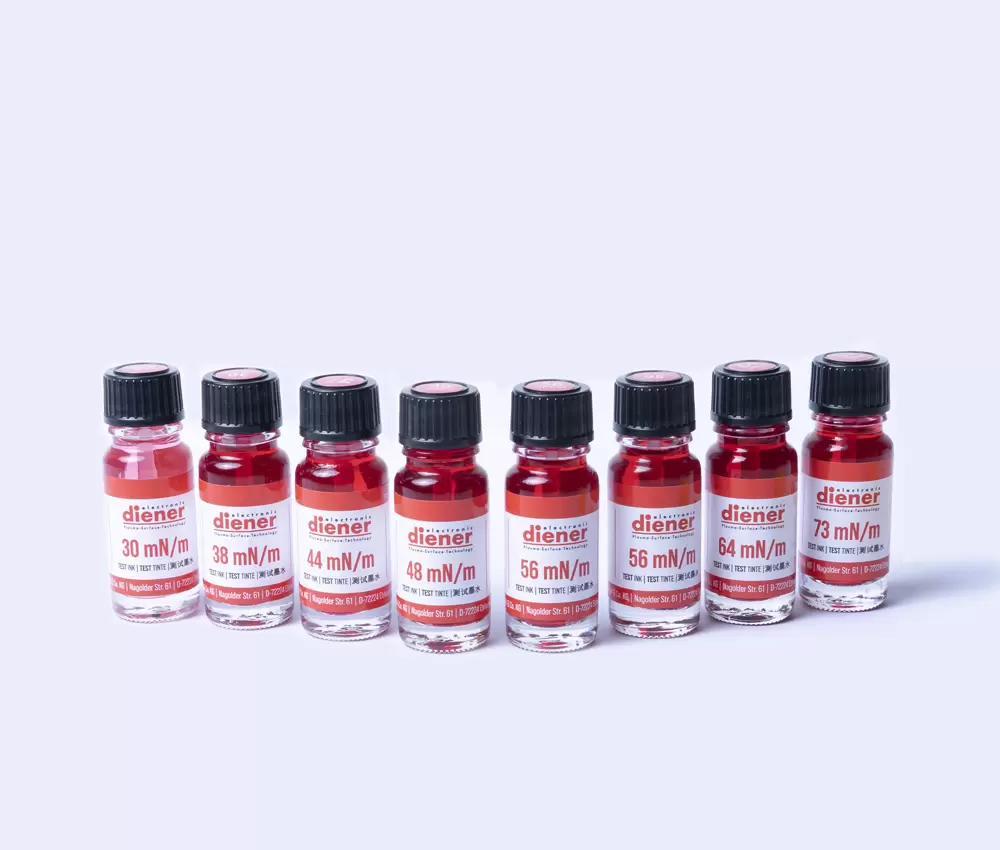
This ink set contains 8 different atoxic, colored test ink flasks. The content will give you information about the surface energy of your samples. The utilization range of inks is between 30 mN/m to 73 mN/m.
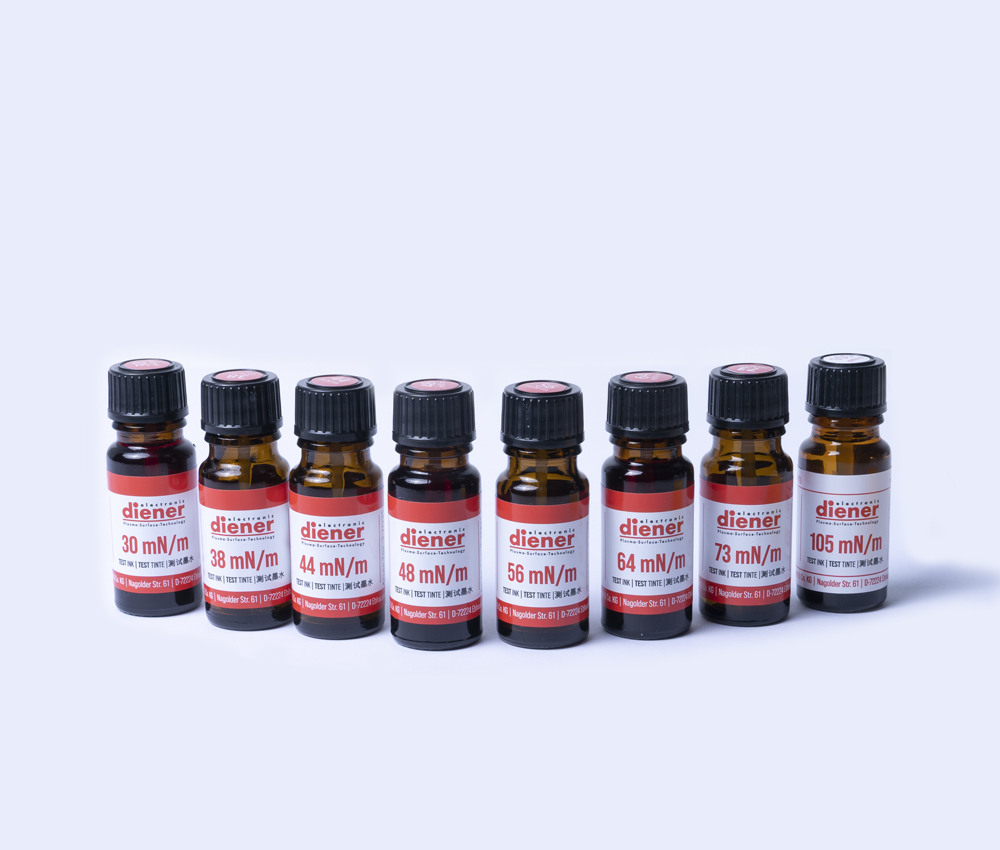
This ink set contains 8 different toxic, red-colored test ink flasks. The content will give you information about the surface energy of your samples. The utilization range of the inks is between 30 mN/m to 105 mN/m.
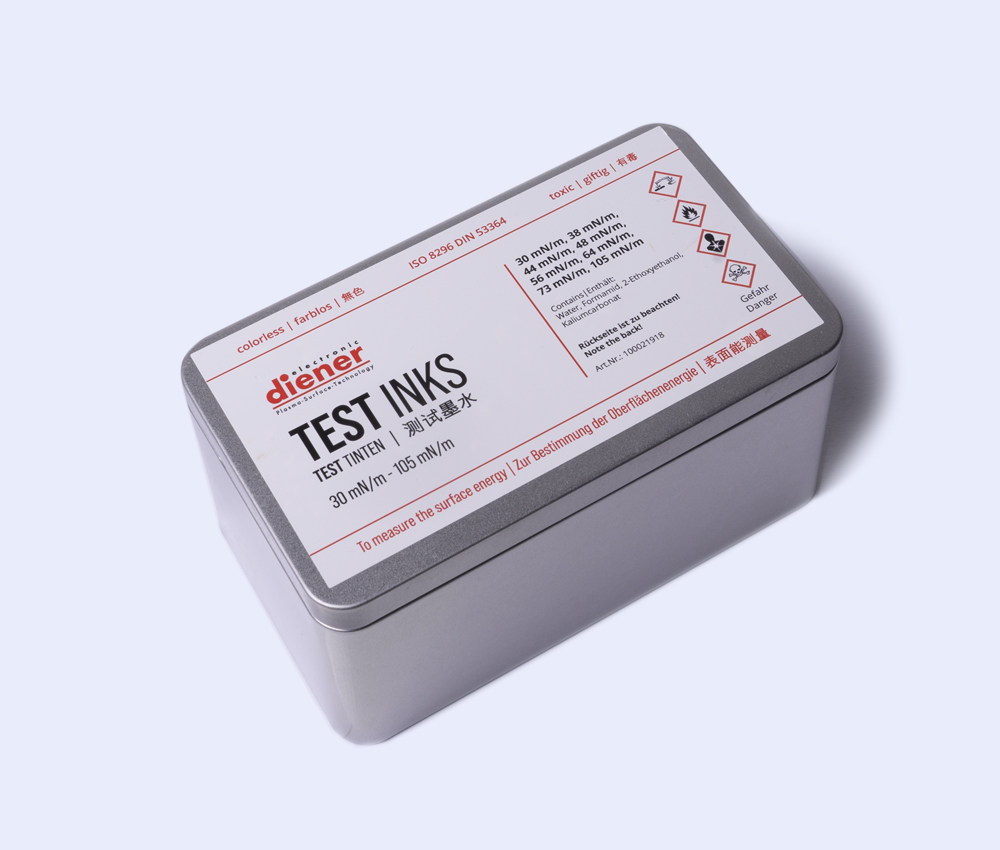
This ink set contains 8 different toxic, non-colored test ink flasks. The content will give you information about the surface energy of your samples. The utilization range of the inks is between 30 mN/m to 105 mN/m. This particular ink set complies with ISO 8296/DIN 53364.
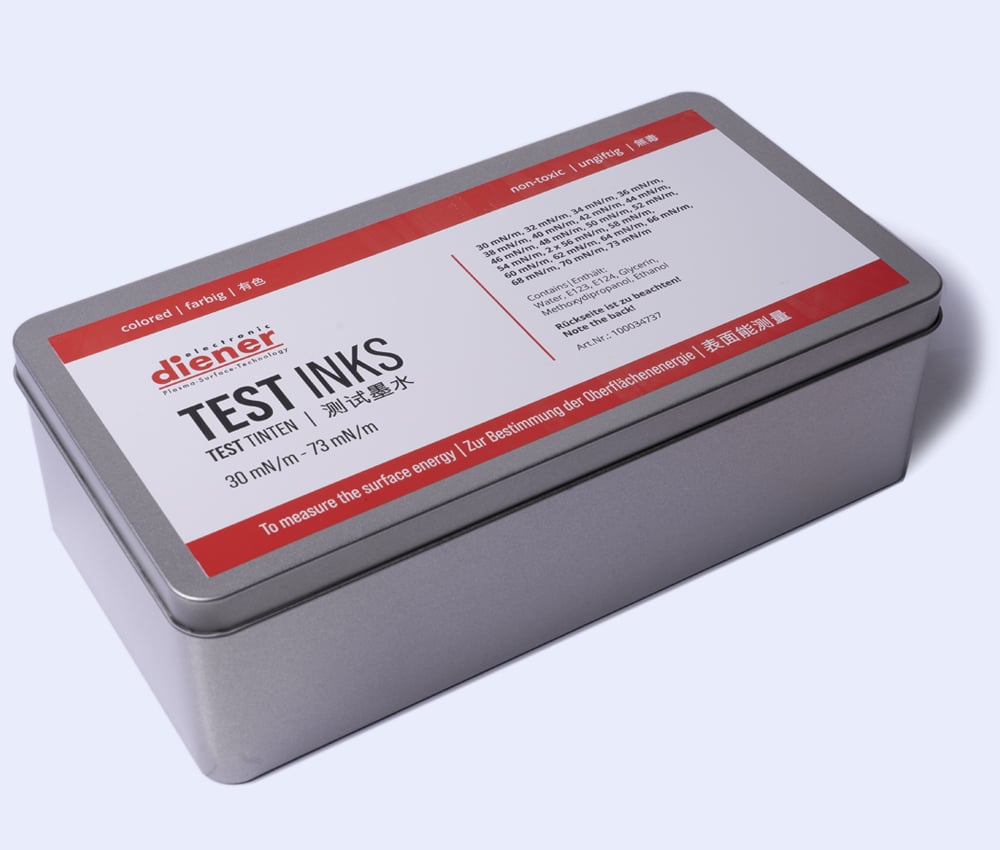
This ink set contains 8 different atoxic, red-colored test ink flasks. The content will give you information about the surface energy of your samples. The utilization range of the inks is between 30 mN/m to 73 mN/m.
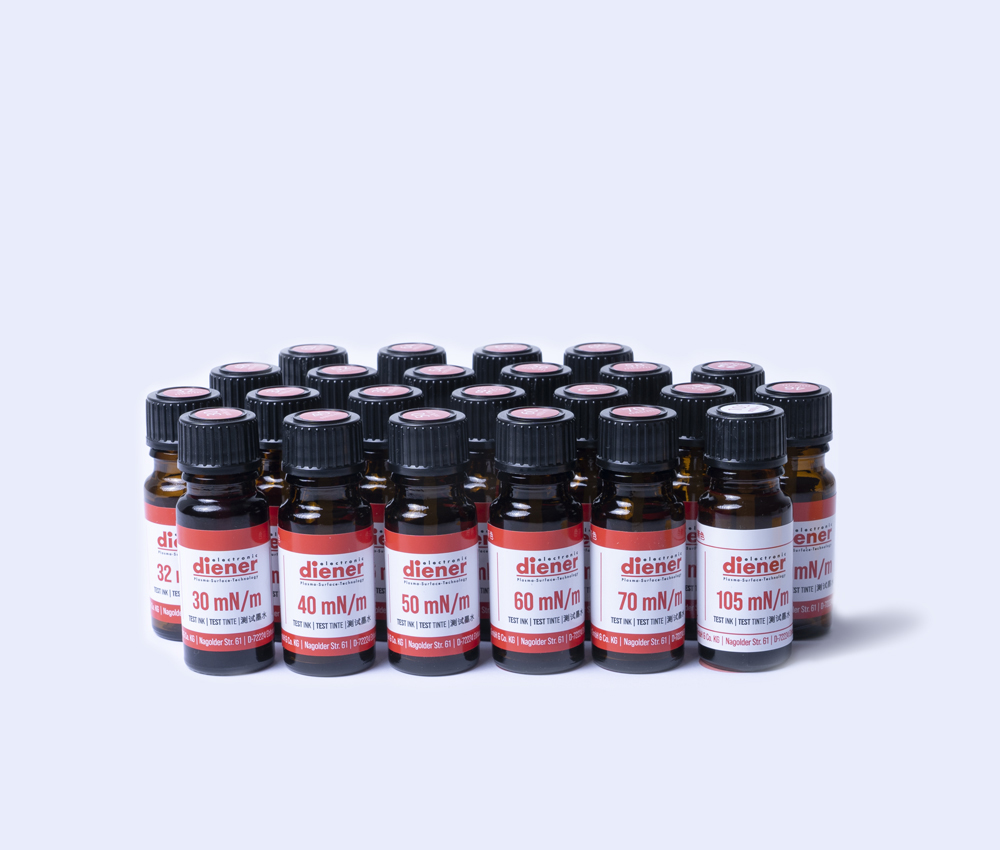
This ink set contains 23 different toxic, red-colored test ink flasks. The content will give you information about the surface energy of your samples. The utilization range of the inks is between 30 mN/m to 105 mN/m.
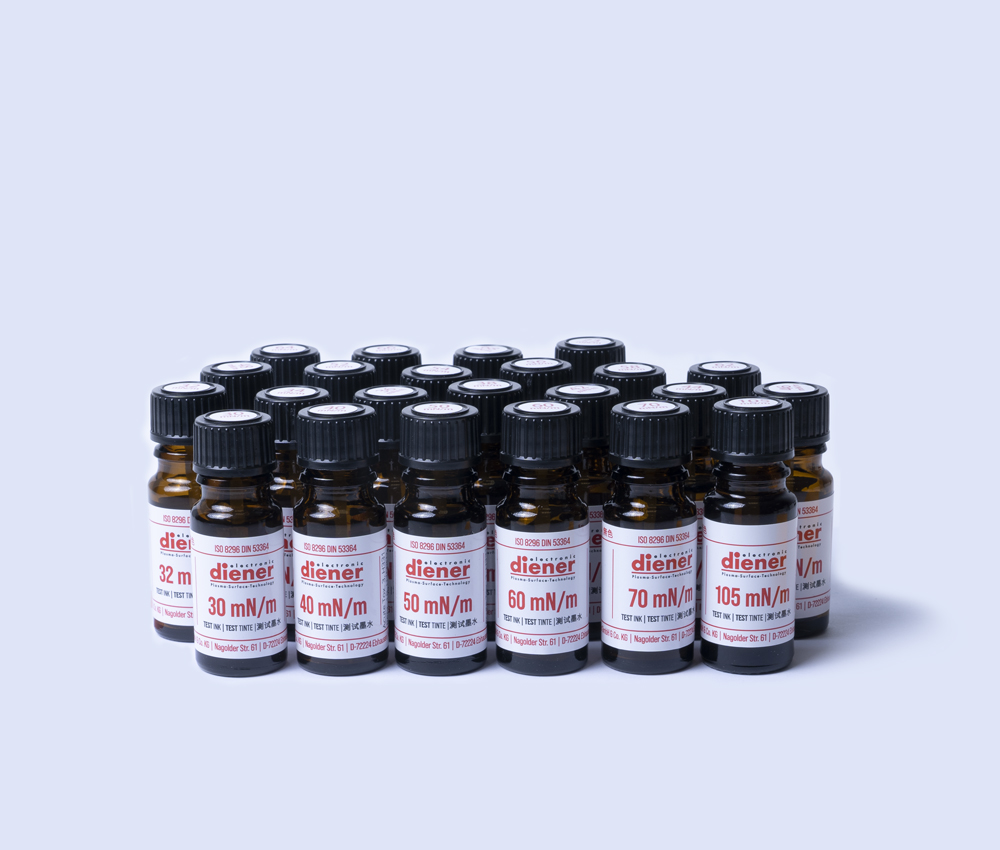
This ink set contains 23 different toxic, non-colored test ink flasks. The content will give you information about the surface energy of your samples. The utilization range of the inks is between 30 mN/m to 105 mN/m. This particular ink set complies with ISO 8296/DIN 53364.
Since the test ink has a well-specified surface energy, it can simply be put onto the surface. The wetting and spreading behavior of the ink then determines the surface energy.
Contact with plasma can change surface energies in different ways, it all depends on the purpose of the plasma treatment. The most common applications are etching, coating, cleaning and activation.
This point depends on the purpose of the treatment as well as on the material and surface area. For large-area deposition, cleaning, activation, or etching commonly low-pressure plasma is used. Smaller, temperature-sensitive surfaces, on the other hand, are often treated with low-temperature atmospheric plasma sources.